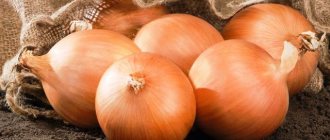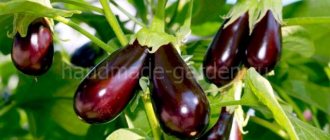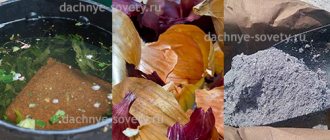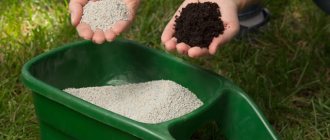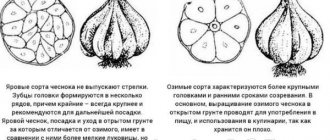Garlic planted before winter must be fed in the spring so that it does not turn yellow and is large. Recommendations from experienced summer residents will tell you how and when to fertilize the crop. For feeding, you can use mineral and organic fertilizers and folk remedies. A vegetable that has been regularly cared for will ripen early, and its quality will undoubtedly be high.
Timing for fertilizing garlic in spring
Winter garlic loves moist soil, so after the snow melts, green feathers jump to the surface of the ground very early. As soon as the vegetable has released its arrows, you can start fertilizing. It is important to carry them out in a timely manner, then the heads will ripen evenly and there will be a lot of harvest. Fertilizers are applied at the specified time:
- a week after the snow finally melts (this happens differently in each region, but approximately mid-to-late March);
- 2 weeks after the first fertilization, around the 10th of April;
- at the end of spring, at the initial stage of head formation;
- in early or mid June.
Usually 3-4 times is enough; there is no need to spray the crop additionally with nutritional compounds if the soil on the site is fertile. If garlic is grown in unfavorable weather conditions and in clay soil, then additional spraying will not hurt. When performing any fertilizing, regardless of its composition, it is important to take into account a number of factors influencing the development of the crop:
- soil acidification;
- climatic features of the region;
- illumination of the ridge;
- garlic precursors;
- characteristics of the variety.
Improper application of fertilizers contributes to acidification or, conversely, the formation of highly alkaline soil, and the culture does not accept such radical changes. Before starting fertilizing, follow the correct agricultural cultivation technique. Before planting garlic before winter, make a fertile planting consisting of humus (10 kg per 1 m2), potassium sulfate (2 tbsp per m2), superphosphate (2 tbsp per 1 m2). Learn how to prepare the soil for planting garlic.
You can check the acidity of the soil by looking at currant leaves if the bushes grow close to the garden bed. Pluck a few leaves and steam them in boiling water in a transparent glass jar. After cooling, put some soil from the ridge into the jar and watch the reaction. Red color indicates increased acidity, green indicates a neutral environment, and blue indicates that the soil is alkaline.
How often can you feed garlic?
During the entire period of growing the crop, from germination to harvesting, garlic is fed 2-4 times. The amount of fertilizing depends on the initial fertility of the soil and the application of fertilizers during planting and on the prevailing weather.
- In case of low fertility (the soil is depleted and has a sandy structure), garlic is fed 4 times: twice during the active growth of greenery and twice during the formation of the head.
- If the summer is rainy, nutrients from the soil are washed out more actively, so fertilizing will also have to be done more often than usual.
- On fertile loamy soil, with the addition of a full range of fertilizers to the soil before planting garlic, you can limit yourself to two feedings.
Features of feeding spring and winter garlic
Winter varieties of garlic planted before winter are fertilized three times:
- As soon as the snow melts and a stable above-zero air temperature is established during the day, nitrogen is added, which promotes the development of the crop as a whole and is necessary for garlic to grow greenery. Urea is often the chosen remedy;
- 2-3 weeks after the first feeding, garlic needs to strengthen the immune system and continue development, for which nitrogen is again added, as well as phosphorus, which accelerates photosynthesis. It is recommended to choose nitroammophoska;
- the third feeding is no longer spring, but early summer, that is, in mid-June, which occurs at the time of formation of the bulbs. The plant needs phosphorus, for which it is best to take superphosphate.
Spring garlic, planted in early spring, is fertilized in the same order and with the same substances, but slightly shifting the timing of fertilizing:
- the first - when 2-3 leaves of each plant sprout appear above the ground;
- the second - about 3 weeks after the first;
- the third - towards the end of June.
Experienced gardeners advise that it is better to apply less fertilizer than to overfeed the garlic - the excess activates the development of the above-ground part to the detriment of the underground, the vegetable heads are formed small, are not stored for a long time and do not have good taste and benefits due to the low content of essential oils.
Improving the soil with green manure
You can improve the condition of the soil for planting garlic using green manure. Green manures are green organic fertilizers that can enrich the soil and convert poorly soluble compounds into a form accessible to plants. They are able to maintain optimal moisture in the soil and start the movement of nutrients. Green manure prevents the development of nematodes.
Mustard, lupine and phacelia work best and are sown in an area prepared for garlic in the same year as the garlic. Planting occurs in early spring; after harvesting green manure, garlic can be planted. The soil will be rich in fertilizers.
You may be interested in: Ammophos fertilizer: an effective complex fertilizer
First feeding of garlic in spring
Fertilizing in the spring is necessary to ensure that garlic has lush green leaves by summer. The more green mass there is on the plant, the larger the bulb will grow: its growth depends precisely on the amount of organic substances accumulated in the leaves.
The solution for the first feeding should contain three main elements:
- nitrogen
_ It is necessary for the active formation of plant leaves. Lack of this element leads to yellowing and slow growth; - sulfur
_ Garlic is a serophilic plant, that is, it “loves” sulfur very much. Without this element, it does not absorb nitrogen from cold soil well; - magnesium
_ In early spring, plants poorly absorb the phosphorus they need from the soil. This is due to insufficient soil temperature. Magnesium is necessary so that garlic can receive phosphorus in a timely manner.
To provide garlic with these microelements, it is necessary to use ammonium nitrate and magnesium sulfate
. To prepare the solution you need to take 20 grams of each fertilizer and 10 liters of water.
In early spring, it is not recommended to use fertilizers containing nitrogen in amide form ( urea or urea
). At low temperatures, such nitrogen is not absorbed by plants and remains in the soil. That is, such processing will be ineffective.
After feeding, you need to monitor the plant. If the volume of green mass does not increase and the leaves still turn yellow, then after 2–3 weeks you can re-fertilize the garlic with the same composition.
Composition of ammonia fertilizer
Ammonium nitrate is an extremely popular complex of minerals, since many plants require fast and high-quality nitrogen saturation during the active growing season. The nitrogen component of fertilizing reaches 30%. This amount of the element allows vegetable crops to balance the amount of protein and gluten, as well as increase yield. In addition to the main component in the form of nitrogen, the composition also includes:
- sulfur (up to 15%);
- calcium;
- magnesium;
- potassium.
The percentage of these substances may vary depending on the type of mineral mixture. However, the predominant elements are sulfur and nitrogen.
Due to the presence of sulfur, the agrochemical is well absorbed by plants. Calcium and magnesium strengthen fiber and accelerate the growth of seedlings.
Second phase
The second feeding of garlic is carried out approximately a month after the first. The plant should have 7–8 true leaves by this time. For this purpose , a complex fertilizer containing nitrogen, phosphorus and potassium with the formula 20:20:20
. There are many similar products on sale.
Garlic processing consists of the following steps:
- The solution is being prepared. Fertilizer manufacturers provide detailed instructions for their preparations. Typically, 20–30 grams of fertilizer are used to prepare a solution for 10 liters of water.
- The solution is applied under the root in the manner described above.
- Garlic is being mulched. Straw is used for this purpose. Mulching allows you to regulate temperature and humidity. In addition, a layer of straw will prevent weeds from growing and prevent soil compaction.
After about a month, this feeding can be repeated.
The process of fertilizing garlic in the spring is necessary for the active growth of foliage and the accumulation of nutrients in them. But it's important not to overdo it. Excess nitrogen will cause the bush to have very lush greenery, but a fairly small head.
Preparing beds for fertilization
When planting in the fall, fertilizer for garlic is not spread over the area where the crop will be planted in the future. The soil must first be prepared, and only then fertile material should be laid. For these purposes, the following is carried out:
- First, green manure is planted as the first preparatory stage of the soil.
- In the autumn, it is placed under a layer of soil to rot.
- The land is thoroughly disinfected. Copper sulfate, manganese, burgundy mixture or boric acid can be used as a disinfectant.
- Preliminary digging of the soil is carried out, during which weeds are removed along with the roots.
Summer feeding of garlic
Approximately a month before the planned harvest, final fertilizing is carried out. Fertilizers for garlic that do not contain nitrogen are used:
- potassium humate
, which contains fulvic acids. It is these substances that help garlic absorb the nutrients remaining in the soil. This fertilizer also provides the plant with potassium; - potassium sulfate
. This fertilizer contains sulfur, which is necessary for garlic.
For processing it is necessary to prepare a solution. 2–3 grams of potassium humate concentrate and 10–20 grams of potassium sulfate are added to water (10 liters). Fertilizer can be applied superficially.
The main task of the final treatment is to saturate the soil with potassium. This substance will promote the filling of the head. Thus, everything that has been built up above the soil surface will be diverted into the head.
After this, the garlic will ripen, growing the bulb. But so that your efforts are not in vain, the arrows should be removed from the plants. If this is not done, the seeds will take most of the nutrients from the head.
Reviews of complex fertilizers
From the reviews of vegetable growers, we can conclude that many people are trying to grow a good harvest of onions and garlic on their site. Some are puzzled by the rapid yellowing of garlic stems or rotting bulbs. The most affordable fertilizer is Agricola-2, costing only 25 rubles. The product perfectly fertilizes sandy soil. They can not only water plants, but also spray them.
Positive reviews are left by consumers about the drug “Cinderella”. It does not contain heavy metals, chlorine and nitrates. A noticeable change in plants is observed two weeks after applying the fertilizer.
The ripening of root crops is noticeably accelerated and the yield of root crops increases after the “Tsibulya” fertilizer. These granules feed the plants with all the beneficial substances. The main thing is to strictly follow the instructions for fertilizers for garlic and onions.
Mineral fertilizers
If cultivation occurs on poor soils, then mineral fertilizers for garlic are simply necessary. Like any other crop, it requires nitrogen, potassium, phosphorus and many other minerals and trace elements for normal growth.
- Urea is traditionally used as a source of nitrogen in large quantities. This fertilizer is especially necessary for garlic in early spring, during the period of green growth. For 10 liters of water take 1 tbsp. a spoonful of urea, stir well and use at the rate of 3 liters of liquid per 1 m2.
- Ammonium nitrate is also rich in nitrogen. Use a solution prepared from 15 g of the substance and 10 liters of water. The consumption is also 3 liters of solution per 1 m2. It is recommended to feed garlic with ammonium nitrate twice in the spring, with an interval of 3 weeks.
- Superphosphate, as a source of phosphorus, is necessary for garlic for the process of photosynthesis and the accumulation of nutrients in the bulb. As a result, the garlic heads will be large, juicy and will keep well in winter. Dissolve 2 tbsp in a ten-liter bucket. spoons of superphosphate, this solution is enough for a bed of 2 m2.
- Nitroammofoska is a source of sulfur, nitrogen, potassium and phosphorus, and in fact can replace the spring application of superphosphate and repeated fertilizing with nitrogen. To dilute, take 10 liters of water and dissolve 2 tbsp in it. spoons of nitroammophoska. For foliar treatment, the concentration of the solution is made half as much, that is, 1 tbsp is enough for a ten-liter bucket. spoons of fertilizer.
Fertilizer consumption rates for different types of soils
If the land is poor in useful components, then an integrated approach is needed - almost all types of nutrients (except nitrogen) can be used to enrich it. This restriction applies only in the fall, since the vigorous growth of leaves of the winter variety is undesirable before wintering.
Most often, depleted areas are treated with the following means:
- superphosphate (40-50 g per m²);
- potassium sulfate (5-10 g per m²);
- azophos brand (NPK 16:16:16) (40-60 g per m²).
During the period of growth and development, you also need to feed, but in a more gentle amount. In this case, it is worth taking into account the previously used (autumn) complex of nutrients.
Organic fertilizers and folk remedies
Many gardeners are afraid of chemistry, preferring all kinds of natural substances to it. And indeed, the methods of feeding garlic that our grandparents used are bringing results.
- Manure is a source of nitrogen necessary for the development of young shoots. However, experts do not advise abusing it, especially chicken droppings, since it can cause the formation of chemical burns on the bulbs. You can fertilize the ground for garlic in the fall if it is planted in the spring. During this time, the manure will have time to rot and will not be so aggressive. It is a good idea to feed the plants with mullein infusion, which is prepared from manure and water in a ratio of 1:7. It must be applied strictly at the root in the spring, under no circumstances getting it on young leaves.
- Compost is traditionally used to improve soil fertility. Garlic develops especially well when added to compost made from food waste. Sprinkle it either over the entire surface of the bed before digging, or into the rows prepared for planting cloves.
- Garlic ash is a source of potassium and phosphorus, and contains virtually no nitrogen. It is useful at all stages of its growing season, so it is recommended to feed garlic with it 3-4 times per season. You can apply ash dryly, scattering it between rows or when preparing beds at the rate of 0.5 liters of dry ash per 1 m2. You can prepare an ash solution from 0.5 liters of ash and 10 liters of water, leave it for a day and water the plantings at the root. Some gardeners dust garlic shoots with ash, which also protects plants from diseases and pests.
- Feeding garlic with ammonia is an excellent way to introduce nitrogen, without the risk of overfeeding, which leads to the accumulation of nitrates in the heads. You can water the soil with ammonia solution before planting the cloves, which is prepared from 50 ml of ammonia and a bucket of water. Garlic responds well to foliar treatment with ammonia; to do this, dissolve 25 ml of ammonia in 10 liters of water and spray the feathers. This is done not only to ensure that the heads are large and contain many cloves, but also to combat certain pests, for example, onion flies, weevils, and aphids.
- It is a good idea to fertilize garlic with yeast, as they contain the amino acids necessary to build the endurance of the crop. To prepare a nutrient solution, take 200 g of raw yeast and dissolve it in 1 liter of water (it is better to take a much larger container), leave for a day, and then dilute it, bringing the volume to 10 liters. It is very useful to feed garlic with this composition in the spring, planted before winter to activate the immune system.
Application of “Onion and Garlic” fertilizer from “Fasco”
A unique supplement in its composition and action is an organomineral preparation from. This nutritional complex is produced in granules, so it works for a long time. Advantages of feeding from "Fasco":
- professional development specifically for onions and garlic;
- the latest developments and research in the agricultural industry are involved;
- contains humic substances and natural components;
- The following elements are included in the “Onion and Garlic” fertilizer: N, P, K, Mg, Fe, Mn, B, Cu, Zn;
- each granule has an organic shell that protects plant roots from overdose;
- increases productivity by 70%;
- The drug has been fully tested.
The “Onion and Garlic” fertilizer is applied before digging in spring or autumn. The granules are packaged in 1 kg bags.
Foliar feeding of winter garlic
Ammonium and amide nitrogen compounds are most important and effective immediately after winter. When deciding what to feed winter garlic in the spring, they often stop at urea. Urea, as is clear from the name of the fertilizer, is an amide compound, i.e. The most effective use is for foliar feeding. Advantages of using urea for spraying plants:
- does not leave burns on the feathers of winter garlic;
- enters the cells of plant tissues within the next two days after irrigating the crop;
- used on all types of soils.
To spray winter garlic, it is enough to dilute 10-15 g (if you don’t have scales: from 1 tablespoon to 1 matchbox) of granules in a 10-liter container with water.
Foliar, i.e. according to the leaf, fertilizing with organic matter is spraying with an ash solution. 1 cup of ash is poured into a liter of water and boiled for up to half an hour. After straining, add a tablespoon of laundry soap or a teaspoon of liquid soap for better fixation on the feathers. Spray in the evening when the sun has set to avoid burns.
Important! Foliar feeding is not just irrigating leaves from a sprayer. For maximum efficiency, the greens are sprayed thickly along the entire length, from all sides, between the main, root, and top dressings.
By providing winter garlic with everything it needs to grow in the first weeks of spring, gardeners count on a good harvest.
Recommendations and common mistakes
On the one hand, applying spring fertilizer is quite simple, but on the other hand, summer residents sometimes make serious mistakes, which is why the yield is noticeably reduced. To avoid them, it is recommended to pay attention to the advice of experienced summer residents:
- It is important to carefully follow the dosage. It is advisable to measure the granules on a kitchen scale. If you do this at home, you need to take into account that a small tablespoon contains 15 g of solid matter.
- It often happens that the soil in the garden is acidic. Feeding garlic with ammonium nitrate in early spring and thereafter will only increase acidity. Therefore, it is recommended to first measure the pH with a special device or indicator paper. If the indicator is less than 6, the fertilizer is mixed with organic matter in a 1:1 ratio.
- It is advisable to combine spring feeding with ammonium nitrate with urea (the components are taken in equal quantities). Thanks to this, the garlic will grow even more actively, and its taste will become better.
- If the greens are of normal color and there is no massive yellowing, there is no need to carry out foliar spring feeding. Excessive application of nitrogen can lead to weakened plants.
- If spring fertilizing is used in a “dry” way, the granules are evenly distributed over the surface. In this case, it is advisable to sprinkle them with earth or water them immediately. But if the soil is moist and the melted snow has not yet melted, you can leave it on top.
- Ammonium nitrate can be stored in any room with moderate humidity at temperatures up to 30 degrees. It is important to avoid contact with water, water vapor, direct sunlight, and dropping the bags.
- When preparing the solution for spring application and directly during feeding, you need to work with gloves. If liquid gets on your hands, wash them with soap and water. If splashed into the eyes, rinse them under moderate pressure of water. If by mistake the solution gets into the stomach, you need to take several tablets of activated carbon, chewing them thoroughly.
Thanks to spring fertilization, the harvest will ripen on time and be rich
How to feed garlic planted before winter
Often, for growing garlic, a technology is used that involves planting before winter. But the harvest does not always live up to expectations, which is due to non-compliance with the feeding schedule. Although the crop is considered unpretentious, it requires some attention, especially in matters of fertilization at the beginning of the season, in anticipation of the period of increased growth. You need to know how to feed a spring vegetable planted before winter.
In addition to chemicals, you can fertilize winter garlic with folk remedies - yeast, chicken droppings, and so on. Spring and winter garlic require different feedings in open ground. Also, seedlings in May and April must be properly cared for.
Why do you need to fertilize garlic?
Fertilizing when cultivating garlic is a necessary procedure. However, before you start applying fertilizers, you need to understand what goals are being pursued. If you plan to cultivate winter garlic, then nutrients must be added immediately when planting the cloves, i.e. in the autumn. The crop at this time needs additional nutrition in order to gain strength for the winter and actively begin to develop with the onset of spring.
The garlic harvest, its quality and quantity, directly depends on the care of the crop, timely and correct fertilizing
If garlic is planted in the garden in the spring (spring), it should be taken into account that applying fertilizers in the fall will enrich the soil with nutrients, and in the spring it will contribute to a good start to growth . To put it in simple words, feeding garlic is a kind of push. The culture also needs nourishment in the summer. As a result, the plant becomes stronger, resistant to temperature changes, diseases and pests.
What fertilizers are best not to use?
Garlic tolerates any mineral, organic and complex fertilizers well, but fertilizers must be handled with care. You should refrain from using undiluted solutions. Under no circumstances should you water the crop with undiluted mullein or chicken. Due to the high nitrogen content, the underground part of the plants will simply “burn” and it will be impossible to save it.
You cannot independently increase the number of fertilizing procedures; too frequent application is addictive at best, and at worst destroys the entire crop. Experienced gardeners always alternate complementary feeding with regular watering, so the substances are absorbed faster in the soil. Agronomists do not recommend using minerals in combination with organic matter, since the concentration of nutrients increases.
Advantages
This type of mineral has many positive qualities. These include:
- relative cheapness;
- ease of use;
- the complexity of nutrients, which allows you to saturate garlic with all the necessary elements;
- rapid solubility in moist soil and water;
- effectiveness at cold temperatures.
Despite the fact that this agrochemical contains less nitrogen than urea, fertilizing is considered more universal. Useful components are found in it in nitrate and amide forms. With the help of nitrates, minerals begin to be absorbed instantly, and thanks to the amide component, some of the beneficial components continue to act after a week.
Separately, resistance to frost should be mentioned. Organic substances begin to act only during the warm period, when the earth warms up. Because of this, winter garlic often experiences mineral starvation in the winter, so in early spring and late autumn the agrochemical can be scattered on the snow. Thanks to its chemical formula, saltpeter burns through the ice cover and reaches the soil, instantly replenishing the lack of nitrogen.
Flaws
Poorly affects yield
Despite the large number of advantages, this type of fertilizer also has disadvantages. Among them are the following:
- the agrochemical is quickly washed away by groundwater, which is why plants may not have time to receive the required amount of minerals;
- the soil structure is disrupted;
- increasing soil acidity and increasing the amount of salts, which can significantly reduce the yield;
- the nitrogen complex of substances may not be enough for good crop growth.
It is not recommended to mix nitrogen fertilizers with peat, sawdust, straw or lime. The presence of these components may cause the mixture to ignite.
You should also strictly adhere to the dosage of the mixture. A large amount of nitrogen in the soil leads to the formation of barren flowers.
What determines the size of a head of garlic?
Every summer resident wants garlic to grow large, but the size of the vegetable depends on several factors:
- Varietal features. Only large-fruited garlic will have a large head. Other things being equal, of course. You shouldn’t expect big garlic if this is not a feature of the variety.
- Crop rotation. If you constantly plant a crop in the same place, then it degenerates and becomes small.
- Planting depth. If the garlic cloves are planted too deeply, they will spend a lot of energy trying to germinate. As a result, the onion will turn out too small.
- Soil structure. The culture grows well in loose, nutritious soil. In too dense soil the head does not turn out large.
- Care. Irregular watering, lack of fertilizing, advanced diseases - all this also negatively affects the size of the garlic head.
